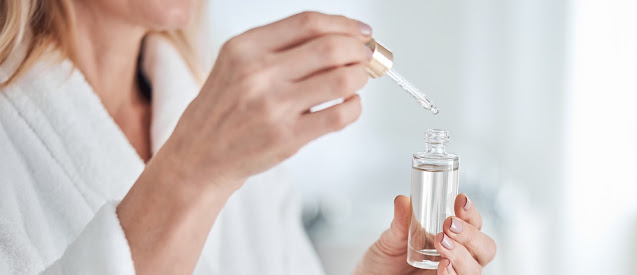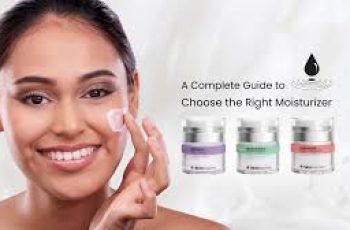How to Clean Makeup Brushes
If you are anything like us, you will find that cleaning your makeup brushes can be a daunting task, especially if you are still searching for a cleaning product that works for you and your brushes!
We have used a lot of products, Fairy Liquid is a nice product for sure, but it dries out our hands and I personally don’t like wearing rubber gloves. There are also sprays and solutions that always help with a quick clean, but won’t give you a squeaky clean brush head. You may also find that overexposure to strong cleaning solutions can cause the bristles of your brushes to become dry and brittle, even if they are designed for brush cleaning!
I stumbled upon this discovery on a cold Wednesday evening a few months ago. I had just cleaned off my makeup and found my makeup brushes to be ugly and filthy. I gathered them all up, went into the bathroom and found Procoal Shampooing Soap. I thought, well, my own hair looks and feels amazing, I wonder how it works with my brushes. The rest, as they say, is history and I am mad that I didn’t put two and two together first! The scents of these bars are also perfect for your brushes: seaweed, charcoal, lavender, and rose, which is an added treat when you get a whiff of the scent while you put your makeup on in the morning!
How to Clean Makeup Brushes with Our Shampoo Bar. We think this technique is a quick and easy way to clean your brushes. Here’s a step-by-step.
Wet Your Brush
Begin by wetting your brush with warm water. Make sure the brush is always facing down so that water doesn’t get into the brush and dissolve the glue that holds the bristles in place!
Lather
Next, take your shampoo bar. The shape and size of the bar fits perfectly in your hand. Hold it in one hand and use your other hand to work up a lather by rubbing circles over it with your brush. You’ll see how much foundation and other makeup washes off your brush! It’s amazing how much you can wash off your brush using shampoo lather. Use the palm of your hand to remove the product from the brush head.
Rinse and Repeat
Rinse your brush with water and massage the bristles to loosen up any remaining product. You can also repeat the previous step until the water runs clear and there’s no makeup left!
Dry your brushes
Don’t forget to give your brushes a good shake as this will help them regain their shape quickly. Let them dry overnight, dangling their heads over the edge so they don’t lie flat on one side.
Result!
In the morning your brushes will be clean, soft and smell wonderful. As the shea butter conditions and keeps the bristles soft, especially on eye makeup brushes, no one wants to be stabbed by sharp bristles while trying to blend eyeshadow! The essential oils leave the brushes with a nice scent but not too strong or sensitive. The shampoo itself also removes bacteria buildup and the generally nasty residue that can linger on our brushes! The final plus is that because it’s natural and gentle on the bristles, the consistency of the shampoo bar won’t change in any way and you’ll find your brushes last longer than before!
It’s best to wash your makeup brushes every two weeks as product buildup can cause the bristles to loosen from the brush and transfer bacteria to your face and back again, creating a bacteria-filled cycle.
If you have problem skin, you’ll find that washing your makeup brushes regularly can prevent further blemishes, especially on areas like cheeks where you apply bronzer and blush! With a shampoo bar, you can effectively clean your makeup brushes. Not only do they get super clean, but they last longer! Any multitasking is a big win for us. So try it out for yourself and see how awesome we are!
DQH Knowledge drop: In your 20s, your skin cell turnover decreases. (Cell turnover is a key component in keeping your skin youthful.) You know what else slows down? Your collagen production. Starting in your 20s, collagen decreases by about 1 percent per year. Should you want to prevent fine lines and wrinkles, start by eliminating behaviors that contribute to premature aging. “If it’s bad for you, it’s bad for your skin,” says dermatologist Michel Somenek.
“Cigarette smoking reduces blood flow to the skin and causes premature wrinkling and a dull skin texture. Making the repeated pursed motion to inhale can also cause smoker’s lines. Alcohol and recreational drugs are toxins for the skin that damage its cellular structure and DNA,” Somenek tells us. “The faster you eliminate vices while you are young, the better chance your skin and body have to recuperate.” Also, adopting an anti-aging routine in your 20s is key. After all, the best offense is a good defense. We spoke to Somenek and experts Joshua Ross and Audrey Kunin to find out more.
Keep reading for the best anti-aging products for your 20s, according to skincare professionals.
Sunscreen
“We all know that the sun is the number one cause of skin aging and starting the prevention in your 20s is very important,” Ross says. “The majority of your sun damage won’t start to appear until you’re in your 30s, so don’t wait until you see it surface or you’ll be behind the curve. Stay ahead of it with a good-quality zinc-based sunscreen worn daily.”
Farmacy Green Defense Daily Mineral Sunscreen
An invisible sunscreen with SPF 30, plus botanical extracts meant to protect skin with tons of antioxidants. Bonus: It’s clean and fine to use under makeup.
Bareminerals Complexion Rescue™ Tinted Moisturizer Broad Spectrum SPF 30
Although we recommend you use your SPF and moisturizer separately, we also understand moments when you don’t have time or energy for that extra step. For those times, this bareMinerals moisturizer is a great thing to have on hand.
Vitamin C Serum
“A great introduction to anti-aging is to start with a vitamin C serum in your morning skincare routine,” Ross says. “It’s a powerful antioxidant that will neutralize free radicals and brighten the skin.” He adds that it’s a great way to counteract the effects of the sun’s harmful rays, which, as previously mentioned, are among the biggest causes of premature aging.
Drunk Elephant C-Firma™ Vitamin C Day Serum
The Drunk Elephant C-Firma is a lightweight serum that promises to give skin a glow by combining the brightening powers of vitamin C with ferulic acid, l-ascorbic acid, and vitamin E. The included sodium hyaluronate is meant to replace hydration loss, so you shouldn’t have to deal with any irritation.
Sunday Riley C.E.O. Rapid Flash Brightening Serum
This potent serum is jam-packed with vitamin C (15 percent, to be exact), which means it’s a potential superstar at both brightening skin and dousing it in antioxidants.
Peptides
Using peptides on your skin has many benefits, says Somenek. “The skin barrier is what defends the body against pollution, UV rays, bacteria, and toxins. It can be damaged by several everyday factors. Using topical peptides aids in building a stronger barrier,” he says. “Peptides comprise elastic fibers, which are a type of protein. These fibers help to make skin appear taut and firm. Peptides can also help repair damaged skin, relieve inflammation, and even out skin tone. Some peptides can kill acne-causing bacteria that is common in 20-somethings.”
Kunin agrees, saying, “Peptides are an excellent entry point for supporting collagen.” She recommends looking for face and eye treatments that contain these collagen-boosting powerhouses.
Charlotte Tilbury Magic Eye Rescue Cream
This Charlotte Tilbury super-emollient eye cream has a base of coconut oil and shea butter (read: it’s incredibly hydrating). Botanicals plus peptides are meant to help reduce dark circles and boost collagen, respectively.
This creamy moisturizer serves up potent collagen-boosting peptides and pycnogenol, and antioxidant-rich vitamin C. “Instead of sitting on top of the skin, peptides penetrate the outer layer so they go deep. The ‘signals’ they send tell the cells to produce elastin and collagen, which are needed for youthful-looking skin,” explains Somenek.
At-Home Peel Pads
Remember that skin cell turnover fiasco we talked about earlier? One way to help support it is by exfoliating. “Exfoliation is important to help keep skin fresh and luminous,” Kunin says. She recommends using at-home peel pads as an easy and effective way to exfoliate.
“The goal in your 20s is to fight the slowing pace of cell turnover. It is wise to use products that gently exfoliate, yet still remove oil and other impurities. Products that have Alpha Hydroxy Acids (AHA) or Beta Hydroxy Acids (BHA) are a good choice.”
According to Somenek, you should only exfoliate two to three times a week. “People of all ages are guilty of over-exfoliating and that can be too much of a good thing,” he says.
Dermadoctor Kakadu C Intensive Vitamin C Peel Pad
A few swipes of this Derma Doctor powerful peel pad promise to leave your skin glowing and smooth, thanks to the seven (yes, seven) types of chemical exfoliants, including AHA and BHA. It also contains vitamin C via Kakadu plum extract for added brightening and antioxidant protection.
KEY INGREDIENTS Kakadu plum extract is sourced from the Kakadu plum, a fruit grown in northern Australia. It contains vitamin C, which restores the skin’s natural barrier, increases collagen production, and soothes irritation.
Dr. Dennis Gross Skincare Alpha Beta® Universal Daily Peel Pads
These are the gold standard of peel pads, with a cult following and over 900 five-star reviews on Sephora. They’re easy to use and contain a blend of anti-aging exfoliating acids.
Emollient Night Cream
“In your 20s, you need to start upping the hydration in your skincare routine. You may have been cautious of over-moisturizing because of acne in your teens, but as you enter your 20s, your skin transitions and becomes drier,” Ross says. “I recommend an emollient night cream added into your evening skincare regimen.”
“Twenty-somethings need to make sure that they are not using creams that will clog their pores and cause excess oil production,” says Somenek. Opt for non-comedogenic products.
Cerave Skin Renewing Night Cream
One great choice is the CeraVe Skin Renewing Night Cream, which is a non-comedogenic night cream that leaves skin soft and glowy. It combines the moisturizing powers of ceramides and hyaluronic acid.
RoC Retinol Correxion Max Hydration Creme
“The best night cream ingredients contain retinol, benzoyl peroxide, and/or salicylic acid or hyaluronic acid. The goal is to moisturize, yet remove excess oil,” says Somenek. This Roc Retinol Correxion cream fits the bill as it contains both hyaluronic acid and retinol so it promises to moisturize while also being non-comedogenic.



